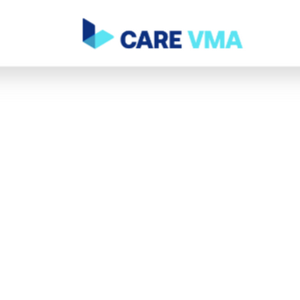A Virtual Medical Assistant is a resource that aids both doctors and patients. They manage tasks such as scheduling appointments and reminding patients to take their medication. These assistants are present in numerous healthcare facilities and are accessible around the clock, simplifying the process for individuals seeking care. Let's examine the functions of Virtual Medical Assistants and how they enhance healthcare for everyone.
Role of Virtual Medical Assistants
Virtual medical assistants support healthcare providers by managing various tasks such as organizing patient data, troubleshooting workflow challenges, and ensuring accurate patient identification. They help streamline the imaging process in radiology departments, allowing for quicker processing of MRI images and computed tomography scans.

By handling structured reporting and managing DICOM tags, virtual medical assistants enable radiologists to concentrate more on diagnosing conditions like vascular anomalies or phleboliths. Enhanced communication is another significant benefit. They facilitate clear exchanges between different specialties, sharing important data about imaging features and treatment options that should be considered based on conditions seen in MRI studies. Virtual medical assistants also positively impact patient experience by providing timely updates about procedures and imaging studies, leading to increased satisfaction.
For example, when patients receive accurate information about the acquisition time or the use of contrast agents, it fosters trust and reduces anxiety. The contribution of these assistants is evident at institutions like Okayama University Hospital, where they enhance operations in healthcare settings, thus improving outcomes for patients.
Evolution of Virtual Medical Assistants
Technological advancements have greatly influenced the capabilities of virtual medical assistants, making them important tools in the healthcare sector. For instance, virtual medical assistants now support the processing of imaging studies like magnetic resonance imaging and computed tomography, improving the speed and accuracy of diagnoses. They help manage patient data, enabling radiologists to better identify conditions such as vascular anomalies or phleboliths.
The evolution of these assistants also reflects the changing needs of healthcare delivery; they streamline workflows within radiology departments by addressing workflow challenges in imaging, such as manual entry errors or time delays related to patient identification. Notable milestones include the introduction of structured reporting and the ability to handle complex tasks, like adjusting imaging features through color standardization and tag morphing of DICOM tags.
These developments enhance the quality of imaging data, as seen in procedures at facilities like Okayama University Hospital, where imaging workflow improvements yield better contrast enhancement and signal intensity in MRI images, ultimately benefiting patients and treatment outcomes.
Key Benefits of Using Virtual Medical Assistants
Cost Efficiency
Virtual medical assistants improve cost efficiency in healthcare by simplifying tasks like managing patient data and generating structured reports. They support radiologists in preparing imaging studies, such as MRI and CT, by automating the organization of DICOM tags and ensuring proper patient identification.
This leads to faster turnaround in the imaging workflow, benefiting departments that face workflow challenges and require accurate documentation for procedures like DCE-MRI or studies involving phleboliths and vascular anomalies. By optimizing image acquisition processes and enhancing the quality of MRI images through techniques like fat saturation and contrast enhancement, these assistants help medical practices reduce labor costs while maintaining consistent service quality. Facilities like Okayama University Hospital can experience a decrease in acquisition time, resulting in less time spent on consecutive scans, directly linking efficiency to cost savings.
Furthermore, theyallow radiologists to concentrate more on diagnosis and treatment, increasing overall productivity without raising expenses.
Increased Accessibility
Increased accessibility through virtual medical assistants improves patient care and outcomes by streamlining the imaging workflow within radiology departments. Tasks like patient identification and structured reporting become easier, allowing radiologists to focus on diagnosis instead of paperwork. For instance, virtual medical assistants can quickly manage patient data and facilitate the handling of imaging studies, such as magnetic resonance imaging and computed tomography.
They help reduce workflow challenges by organizing information, which can lead to faster diagnosis of conditions like vascular anomalies, phleboliths, and masses.
These assistants also eliminate barriers to healthcare access for diverse populations. By using telehealth technology, patients in remote or underserved areas can receive services without the need to travel long distances. Patients benefit from features like contrast enhancement in MRI images and optimized signal intensity for various imaging studies, improving their detectability of diseases. The integration of virtual medical assistants ensures that facilities like Okayama University Hospital can handle consecutive scans efficiently, enhancing the quality of care while promoting interoperability in medical imaging.
Enhanced Patient Engagement
Virtual medical assistants enhance patient involvement in healthcare by streamlining communication with providers. They simplify explanations of results from medical imaging, making it easier for patients to comprehend their diagnoses and treatment options. Clear presentation of imaging features enables improved understanding, which leads to greater satisfaction and health outcomes.
Moreover, with tools like structured reporting and imaging workflows, virtual medical assistants provide continuous education about health conditions. They guide patients through imaging procedures, clarifying aspects such as contrast agents in MRI scans or computed tomography. By optimizing workflow and integrating with healthcare systems for better patient identification, these assistants create a more seamless experience.
Supporting patients in understanding complex concepts like signal intensity and contrast indexes encourages ongoing conversations about treatment, resulting in a more informed and engaged patient.
How Medical VAs Simplify Imaging Report Processes:
Streamlining Data Entry
To reduce the time required for data entry in medical imaging processes, virtual medical assistants service can implement strategies like structured reporting and automation. By using automated systems that focus on specific imaging features, such as mass detection or vascular anomalies, they can minimize manual input. Technology helps improve accuracy through the use of DICOM tags and tag morphing, which ensures that patient identification is consistent across MRI images and computed tomography scans.

The introduction of color standardization and contrast enhancement also aids in maintaining quality, especially in capturing signals like density and contrast index. Developing standardized procedures for imaging workflows allows radiologists in a radiology department to consistently report findings, such as phleboliths and serpiginous vessels.
This reduces the risks of errors and improves the detectability of important imaging data, leading to better diagnosis and treatment options for patients. By streamlining aspects like acquisition time and integrating systems like CI Curve and CI Peak into their workflow, imaging centers can enhance overall efficiency, ultimately benefiting healthcare services at facilities like Okayama University Hospital.
Improving Communication Between Teams
Improving communication between teams can be achieved by implementing regular meetings and feedback sessions. These gatherings allow teams in the radiology department to discuss findings from imaging studies, such as MRI images and computed tomography scans. Virtual medical assistants can help schedule these meetings, ensuring that all specialties, including vascular anomalies and treatment planning, are represented.
Technology is important; for example, virtual medical assistants can enhance workflow by managing patient identification and ensuring accurate tagging of DICOM files. This creates a streamlined process where medical imaging features like signal intensity and contrast enhancement are easily shared. Tools that aid in structured reporting enhance how information is communicated, making diagnostic diagrams clearer to all involved.
By using consistent standards, such as color standardization and tag morphing, medical teams can increase interoperability, reducing sources of confusion.
Additionally, sharing details about risk indicators (ris), ci curves, and densities promotes transparency, helping teams stay focused on improving patient outcomes, especially when addressing challenges like early weak enhancement and the identification of phleboliths.
Software and Tools Utilized by Virtual Medical Assistants
EHR Systems
EHR systems should include features like structured reporting and interoperability to help virtual medical assistants manage patient data effectively. These systems allow virtual medical assistants to access MRI images, including diagnostic diagrams that display imaging features like phleboliths or serpiginous vessels. This access aids them in assisting radiologists by identifying specific details such as mass density and signal intensity.
EHRs improve communication and data sharing by using DICOM tags and color standardization, making it simpler for assistants to relay important information like contrast index values and treatment updates to healthcare teams.
Additionally, by streamlining the imaging workflow, EHR systems reduce workflow challenges, permitting virtual medical assistants to process consecutive scans more quickly and enhance tasks related to medical imaging studies. They can also assist in monitoring abnormal findings through contrast enhancements like early weak enhancement or fat saturation, simplifying the detection of vascular anomalies and other diseases. This efficient organization ultimately supports better patient identification and care.
Telehealth Platforms
Telehealth platforms offer features that simplify patient interactions during virtual consultations.
For example, they enable structured reporting and patient identification, allowing virtual medical assistants to manage imaging workflows. Healthcare providers can examine conditions such as vascular anomalies and phleboliths through MRI images and computed tomography scans. These platforms also consider factors like signal intensity and density to enhance image detectability, including the use of contrast agents for early weak enhancement and evaluating diagnostic diagrams.
To ensure patient confidentiality, telehealth platforms adhere to strict regulations and implement security measures to safeguard patient data. They keep information exchanged during consultations private and secure, preventing unauthorized access.
By integrating with existing EHR systems, telehealth platforms improve workflows for medical professionals. Features like tag morphing and color standardization assist in quality image acquisition and streamline processes in radiology departments and imaging centers. The systems effectively manage data from consecutive scans, optimizing acquisition time and facilitating improved treatment options for various diseases and conditions.
Navigating Workflow Challenges in Medical Imaging
In medical imaging, common workflow challenges include managing patient data, ensuring efficient image acquisition, and handling radiology reports. Strategies such as structured reporting and effective tag morphing of DICOM tags can streamline these processes. Virtual medical assistants help by automating tasks like patient identification and report generation, allowing radiologists to focus on interpreting MRI images or detecting vascular anomalies.
For instance, using tools developed from research at institutions like Okayama University Hospital can enhance the detectability of features like phleboliths or serpiginous vessels within imaging studies. Improving collaboration between imaging centers and healthcare specialties can further boost efficiency. Regular meetings and shared diagnostic diagrams aid in discussing cases, such as interpreting ci-max values in contrast-enhanced scans or analyzing signal intensity in MRI sequence images.
By fostering communication and implementing technology like CI curve analysis or monitoring acquisition time, teams can effectively address workflow issues, leading to better treatment outcomes for patients with various diseases.

Imaging Features Leveraged by Virtual Medical Assistants
Diagnostic Diagram Creation
Creating a diagnostic diagram in medical imaging involves several components, such as patient data, imaging features, and signal intensity.
For example, when radiologists analyze MRI images, they consider variables like tissue density and conditions like phleboliths or vascular anomalies. A well-structured diagnostic diagram can clarify complex details, helping healthcare professionals understand conditions like early weak enhancement in contrast-enhanced scans. Virtual medical assistants significantly contribute to this process by organizing patient identification and ensuring interoperability between imaging centers. They can automate tasks like tag morphing and color standardization, enhancing the imaging workflow, allowing quicker and more accurate diagnosis. In facilities like Okayama University Hospital, the use of virtual medical assistants can streamline data for consecutive scans, reducing acquisition time and improving treatment planning.
By addressing workflow challenges, they help radiologists focus on interpreting the diagnostic images, such as those generated from DCE-MRI and CT, leading to improved patient care outcomes.
Integrating Tables for Data Presentation
Integrating tables in medical imaging reports helps virtual medical assistants present information more clearly.
For example, tables can organize imaging features such as signal intensity, density, and contrast index, making it easier for radiologists to spot conditions like vascular anomalies or fat saturation in MRI images. To design effective tables, one best practice is to use consistent formatting, which enhances readability. Color standardization can also help highlight important details about treatments or diseases related to findings from computed tomography or DCE-MRI studies. Integrated tables encourage better collaboration among healthcare teams by summarizing patient data and facilitating patient identification, allowing radiologists to focus on diagnosis without getting lost in complex text. They can quickly reference important metrics like ci-peak and ci-max while discussing findings, such as phleboliths or serpiginous vessels, with other specialists.
This kind of structured reporting improves communication and workflow in radiology departments and imaging centers, ultimately leading to improved care for patients.
Improving Enterprise Imaging Efficiency with Medical VAs
Medical virtual assistants enhance the efficiency of enterprise imaging processes in healthcare by improving communication and coordination among imaging teams.
For example, they manage patient data and ensure accurate patient identification, which is important for imaging studies like magnetic resonance imaging (MRI) and computed tomography (CT). By organizing and standardizing DICOM tags, medical VAs help radiologists quickly access necessary imaging features and diagnostic diagrams, enabling better detection of conditions such as phleboliths or vascular anomalies. They also streamline structured reporting, allowing for quicker turnaround times on important reports that involve the analysis of imaging outputs, such as contrast index and signal intensity.
Additionally, medical VAs track acquisition times, thus reducing delays during image acquisition from consecutive scans. This not only increases the efficiency of the imaging workflow but also ensures timely treatment decisions based on diagnostic assessments.
Future Trends for Virtual Medical Assistants in Healthcare
Future developments suggest that improvements in artificial intelligence and machine learning will enable virtual medical assistants to optimize imaging processes in healthcare. These assistants can quickly analyze MRI images and CT scans, assisting radiologists in identifying issues such as vascular anomalies and phleboliths. With structured reporting tools, they help clarify complex imaging details, enhancing precision in areas like fat saturation and image acquisition.
Integration with wearables and IoT devices will also enable virtual medical assistants to track patient data in real time, allowing prompt treatment for conditions identified in consecutive scans. Their capability to handle patient identification and improve interoperability among imaging centers will address workflow challenges, enhancing patient care.
Changes in regulations may affect how these virtual medical assistants function, guiding procedures for generating imaging reports while maintaining patient safety regarding ionizing radiation. As these technologies advance, features like color standardization for diagnostic visuals and the tagging of DICOM files will establish new benchmarks for medical photography and contrast enhancement.
Challenges Faced by Virtual Medical Assistants
Understanding Imaging Workflow Challenges
Healthcare professionals often encounter challenges in the imaging workflow that can slow down processes and impact patient care. Common issues include delays in patient identification, mislabeling of MRI images, and difficulties in coordinating consecutive scans. These obstacles can reduce the efficiency of radiology departments and lead to errors in diagnosis. Technological advancements, like enterprise imaging systems and structured reporting, enhance the management of these issues.
For instance, DICOM tags improve interoperability and help in organizing medical imaging data. Virtual medical assistants can significantly enhance workflows by automating patient data entry and ensuring accurate tagging, which shortens the acquisition time for imaging studies.
Maintaining Patient Confidentiality
Virtual medical assistants must adhere to strict guidelines to safeguard patient data during online communications. This includes using secure channels for sharing imaging reports like MRI images and ensuring patient identification information is well protected. They can effectively manage the sharing of necessary medical imaging details while maintaining privacy by only discussing patient information with authorized personnel, such as radiologists within healthcare facilities.
Training should encompass topics such as the appropriate handling of DICOM tags, structured reporting, and the implementation of encrypted messaging systems to protect sensitive data. They should also be educated about imaging features like contrast enhancement and the detection of vascular anomalies, which are important for diagnosis and must be communicated securely.
Regular updates on local laws and regulations related to patient confidentiality, including the handling of phleboliths or treatment for diseases, will deepen their understanding of responsible data management. Training programs should highlight the significance of confidentiality in imaging workflows and the challenges encountered during image acquisition.
Summary
Virtual medical assistants are tools designed to support healthcare providers and patients in various capacities. These assistants incorporate artificial intelligence and machine learning to streamline administrative tasks like appointment scheduling, patient follow-ups, and health record management.
By automating routine processes, virtual medical assistants enhance operational efficiency and reduce the administrative burden on healthcare staff. This allows providers to focus more on patient care instead of paperwork.
Moreover, virtual medical assistants can improve patient engagement by providing medication reminders, answering common queries, and facilitating telehealth appointments. They contribute to better communication between patients and healthcare providers.
The adoption of virtual medical assistants is growing, with a notable increase during the COVID-19 pandemic as healthcare systems sought to provide services remotely. Statistics indicate that organizations implementing these tools often see improved patient satisfaction and operational outcomes.

FAQ
What is a virtual medical assistant?
A virtual medical assistant is a remote professional who supports healthcare providers by handling tasks like scheduling appointments, managing patient records, and processing billing. For example, they can organize telehealth visits and follow up with patients via email or phone to ensure proper care.
How can a virtual medical assistant benefit my healthcare practice?
A virtual medical assistant can streamline administrative tasks, such as scheduling appointments and managing patient records, freeing up your time for patient care. For example, they can handle billing inquiries and follow-up reminders, improving patient satisfaction and practice efficiency.
What tasks can a virtual medical assistant handle?
A virtual medical assistant can handle appointment scheduling, patient follow-ups, medical billing, maintaining electronic health records, and managing telehealth consultations. For example, they can confirm appointments via phone or email and update patient records after consultations.
Are virtual medical assistants trained in medical terminology and healthcare regulations?
Yes, virtual medical assistants are trained in medical terminology and healthcare regulations. They understand terms related to patient care, billing, and coding, and are familiar with HIPAA compliance to protect patient privacy. Examples include managing patient records and scheduling appointments while ensuring confidentiality.
How do I choose the right virtual medical assistant for my needs?
To choose the right virtual medical assistant, define your specific needs (e.g., scheduling, patient communication), check qualifications and experience, review client testimonials, and request trial tasks to evaluate performance. For instance, if you need telemedicine support, prioritize candidates with telehealth experience.


Write a comment ...